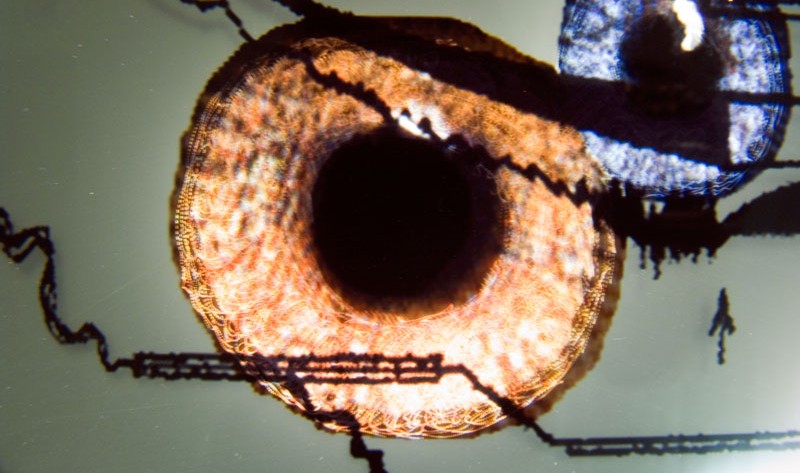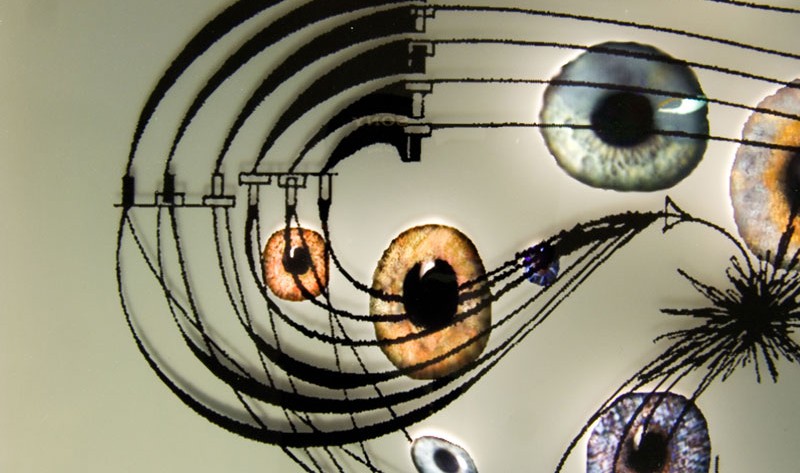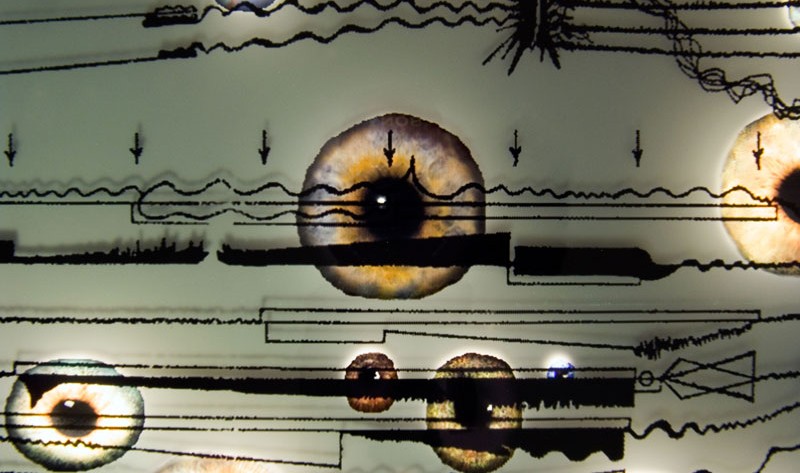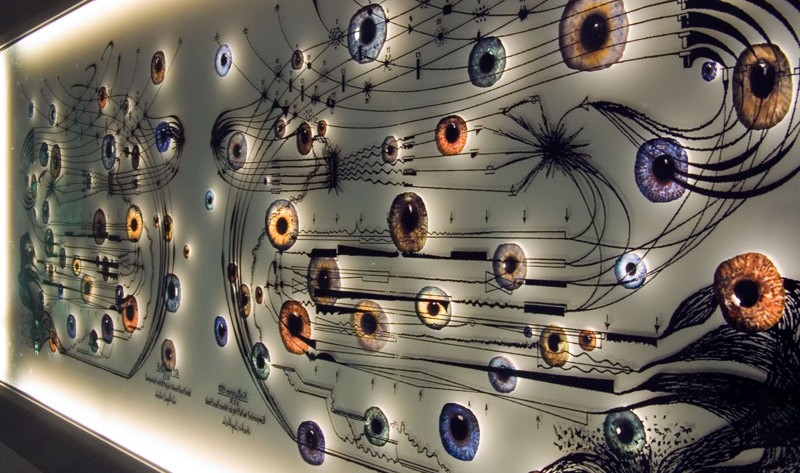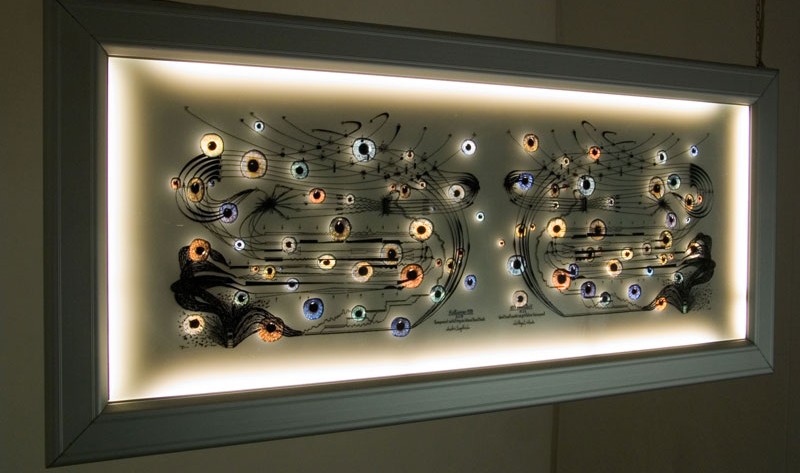The concept of information, with a musical starting point.
{The sense organs}
Visual and audio collage
This installation has its starting point in the music of Anestis Logothetis. The personal system of ‘graphic, polymorphic notation’, as Logothetis describes it, indicates a special type of controlled improvisation by the performers, resulting in entirely different performances of the same score. Thus the spectators (the irises of their eyes – optical collage – unique to each individual, like the scores of the artist) attend and enjoy on each occasion a different concert. The audio collage is created by a musical piece which is heard continuously, and another which is heard when the spectators moving around the installation break the beam of light emitted by the light cell. In respect of the sense of information, here we have sense organs (irises) through which we receive information.
Installation
Dimensions: 1.50cm x 0.68cm x 4.5cm
Materials: glass,film, plexiglass, aluminum, fluorescent light, microcontroller, speakers, digital amplifier
Anestis Logothetis
Logothetis was born to Greek parents in 1921, in Pyrgos in eastern Romylia. He spent the years 1934-42 in Greece, before moving to Vienna where he studied civil engineering. From 1944 to 1952 he studied style and composition. In 1960 he won the Koerner Prize and in 1963 shared with Xenakis the first prize in the composition competition of the Athenian Technological Institute with the work Mesouranisi. He died in Vienna in 1994.
Some works:
- Operas: The Judgement of Paris in Paris, Daidaleia, What is Sisyphus’ stone made of?
- Radio operas: Nekrologio, Butterflies, Resurrections, Insect Party
- Works for orchestra: Accumulation for violin and orchestra, Coordination, Mesouranisi, Maiandros, Completion, Diffusion
- Works for solo instruments: Waterfall, Catalyst, Hydrogeios for flute
- Electronic works: Fantasmata, Meditation, Cyclopeia
- Vocal music: Rivers of the Styx, Acheron III, Pyriflegethon,Kyriarchiko song for church organ and voice
Objective correlative
The visual and audio collage is the second part of a project which deals with search, acquisition, management and use of information. This project is the result of the experiential relationship between the artist and the music and artistic field, as a commonplace, channel of utterance of complementary power of visual and musical substance and their mutual interaction in the production of meaning.
The visual and audio collage was triggered and inspired by Anestis Logothetis’ music. He was an important pioneer composer of the 20th century, with radical proposals coupling image, sound and speech in his work. He evolved the system of notation and music scores and created the so-called “polymorphic graphical notation.”
While the artist uses the disparate materials with discipline and allegiance, what she achieves -through accidental interruption and final synthesis of the audio by audience’s movement in space- is to encourage improvisation. Doing so, she underlines the multiform entity of art and its conceptual dimension – something that A. Logothetis aims for in his work.
The artist, through free association of ideas, achieves the departure from the restrictive confines of the metric, the expression of emotions, the special function of composer’s extended time and space and suggests what Eliot intuitionally invented and named “objective correlative” [1], explaining that the only way of expressing emotion in the form of art is finding an ‘objective associative’.
Through audible sound and juxtaposition of eyes as recipient’s main points of reception, the artist attempts to stimulate reflective mood, triggering a subversive attitude to the mechanisms of the human unconscious, suggesting ultimately what Beckett calls the “primacy of internal vision “[2] while Auguste Rodin puts it as:” the art only begins with the inner truth “[3].
[1] Thomas Stearns Eliot, Hamlet and His Problems, 1919, essay.
[2] Samuel Beckett, Le monde et le pantalon, 1989, Les Editions de Minuit, trans. Maria Papadema, Epsilon, 2005, p.33
[3] Auguste Rodin, Testament, trans. Alexandros Adamopoulos, Agra, p. 15
Kenanidou Maria [Art Historian]

